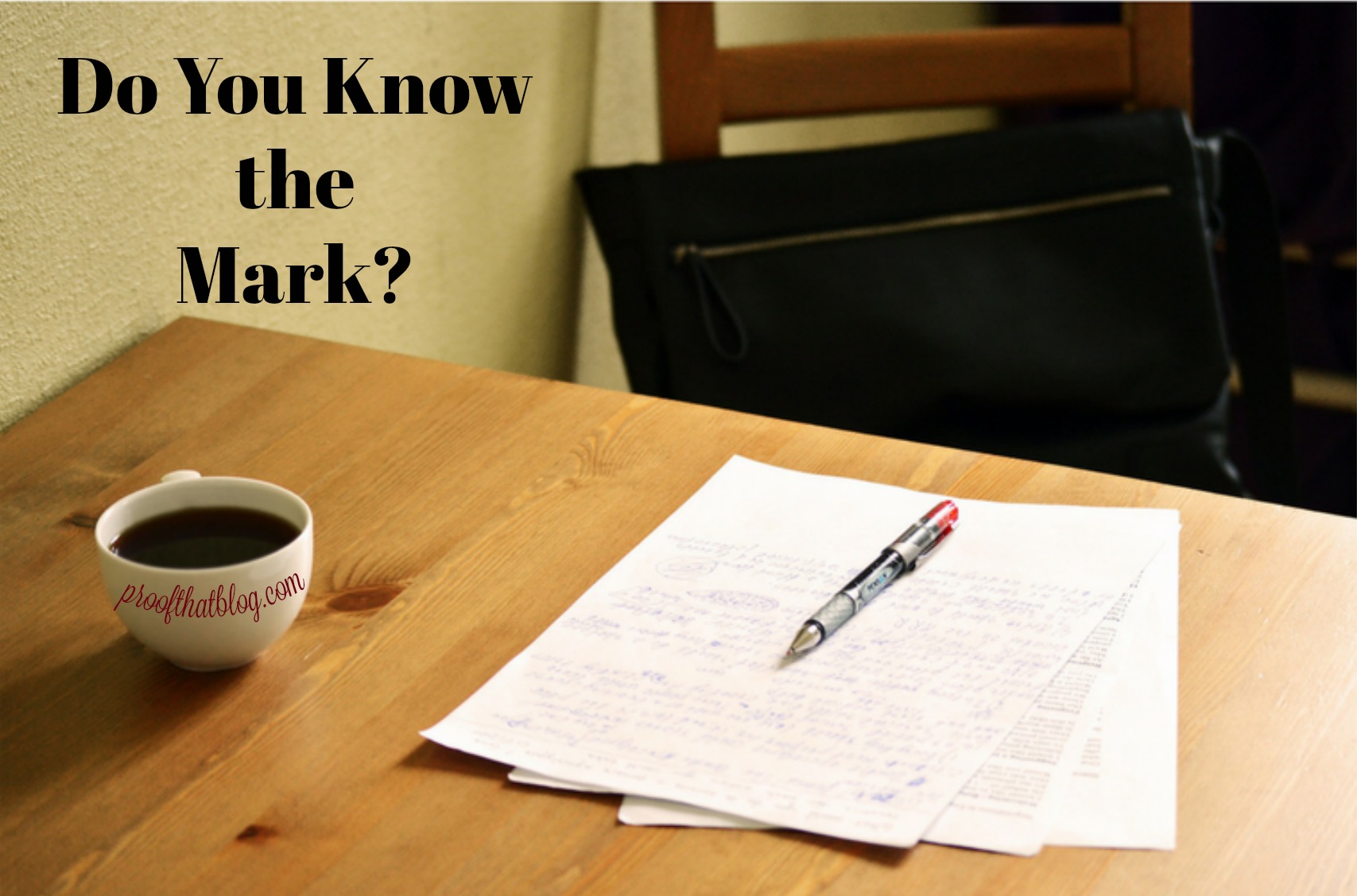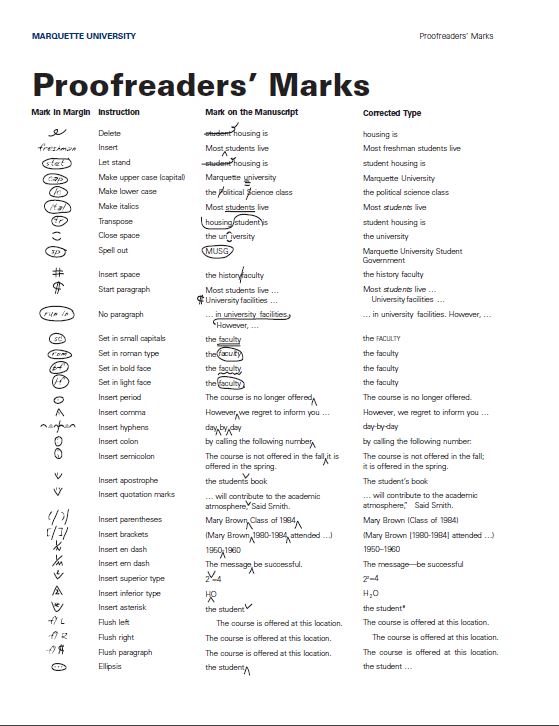 When people edit a hard copy of a document (and, yes, some people still do that), there are certain proofreading marks that have been used throughout time. There is a great resource for these marks that I found online at http://www.marquette.edu/omc/documents/proofreaders.pdf. It includes not only the symbol, but what the corrected language would look like. I’ve added a link to this document on the Files page for printing it out and keeping it at your desk.
When people edit a hard copy of a document (and, yes, some people still do that), there are certain proofreading marks that have been used throughout time. There is a great resource for these marks that I found online at http://www.marquette.edu/omc/documents/proofreaders.pdf. It includes not only the symbol, but what the corrected language would look like. I’ve added a link to this document on the Files page for printing it out and keeping it at your desk.

A few comments:
- The word “stet” is one that I didn’t know when I started in the legal field and I have had others ask me about. It basically means “I marked that out by accident so please leave it the way it was.” Make sure to look for that before you spend time making edits that are unnecessary.
- Ellipsis should have spaces between the periods according to The Gregg Reference Manual, 11th ed., ¶ 291. The Chicago Manual of Style agrees with Gregg on this one, but the AP Stylebook does not. Microsoft prefers the three periods with no spacing. The most important thing is to choose a style and be consistent. I’ve addressed this issue before at https://proofthatblog.com/2012/11/05/ellipsis-marks-spaced-or-not-that-is-the-question/.
- If the author doesn’t use these proofreading marks on a hard copy of their document, they will edit it online and you will still be expected to proofread it and make the necessary edits. You should do that in redline so the author can see your suggested edits. Just making edits could change the meaning of the sentence (or a whole document), so you need to have the author approve the changes. I briefly addressed this at https://proofthatblog.com/2012/11/18/time-for-a-quickie/.
- It is nice that there is a chart with the “standard” proofreading marks, but some authors develop their own marks. If you really don’t know what they’re trying to do, ASK. Then keep track of those marks so that someone you may have helping you will have a cheat sheet with the authors special marks defined.
Learning the proofreading marks is helpful so you can make the author’s edits appropriately and so that you can use them correctly when you are the author editing your work. What is the most creative proofreading mark you’ve seen?


 Follow
Follow